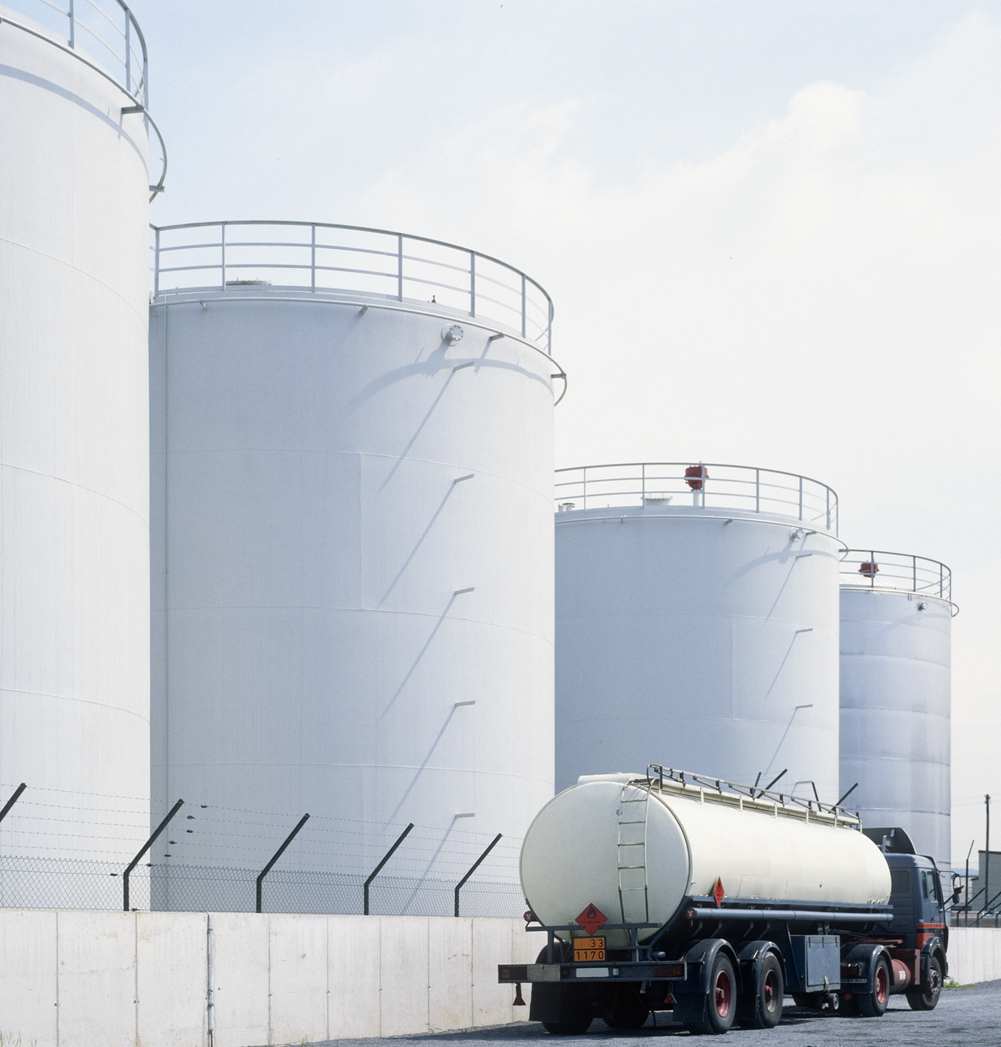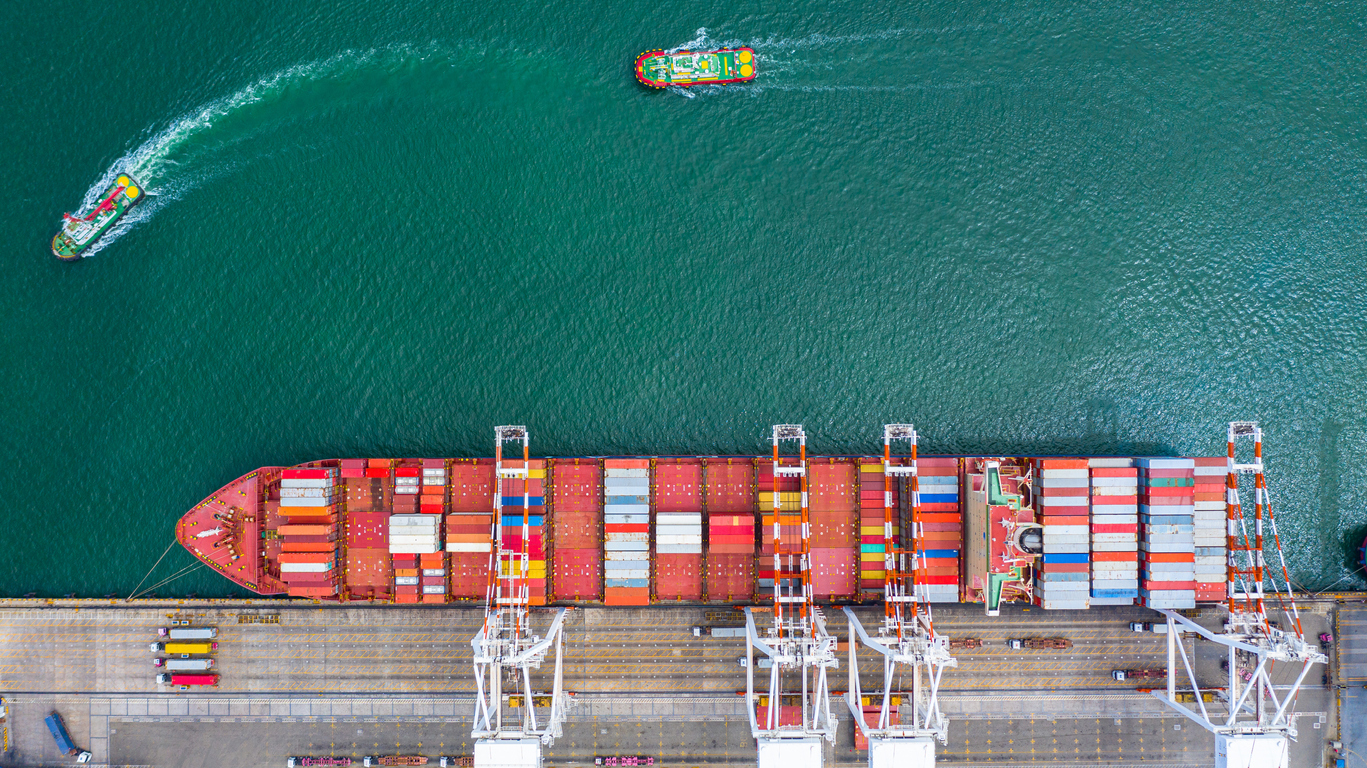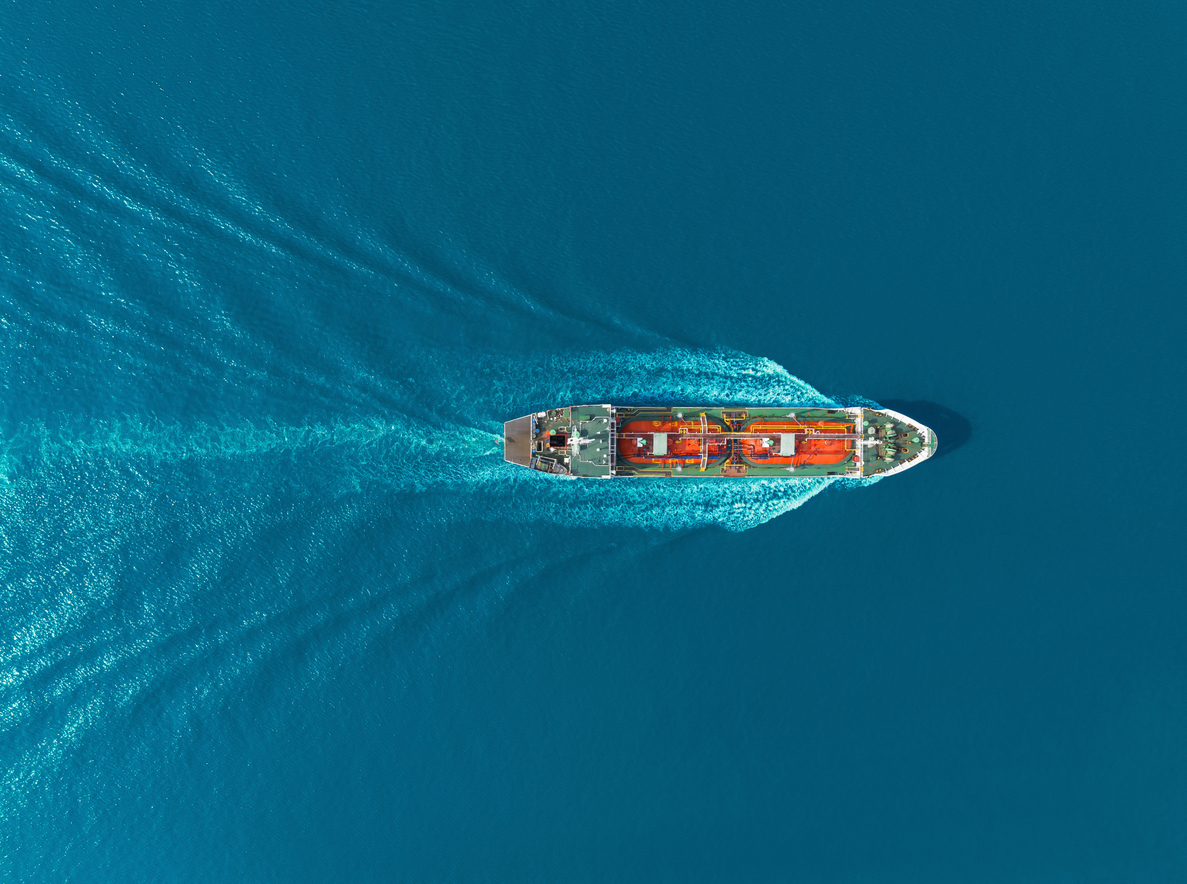Revolutionizing the Oil and Gas Industry in Nigeria: Exploring the Benefits of Tank and Pipeline Inspection Cameras by Wigmore Trading
Revolutionizing the Oil and Gas Industry in Nigeria: Exploring the Benefits of Tank and Pipeline Inspection Cameras by Wigmore Trading
Welcome to the world of cutting-edge technology revolutionizing the oil and gas industry in Nigeria! In today’s blog post, we dive deep into a game-changing solution that is transforming how tank and pipeline inspections are conducted – introducing Tank and Pipeline Inspection Cameras by Wigmore Trading. Say goodbye to traditional inspection methods that are time-consuming, costly, and prone to human error. Join us as we explore the immense benefits these innovative cameras bring to the table, ensuring efficiency, safety, and unprecedented accuracy in this crucial sector. Get ready for a mind-blowing journey where advanced imaging meets industrial prowess – let’s embark on this transformative exploration together!
Introduction to the Oil and Gas Industry in Nigeria
Introduction to the Oil and Gas Industry in Nigeria
The oil and gas industry in Nigeria is a vital sector of the country’s economy, accounting for over 90% of its export revenues and contributing significantly to its Gross Domestic Product (GDP). It is the largest industry in Africa’s most populous nation and has been a major source of revenue for the government since it was discovered in commercial quantities in 1956. The country is blessed with vast reserves of crude oil and natural gas, making it one of the top producers and exporters in Africa.
Nigeria’s oil and gas industry is mainly located in the Niger Delta region, which spans across nine states including Bayelsa, Rivers, Delta, Akwa Ibom, Cross River, Edo, Imo, Abia, and Ondo. These states are home to numerous multinational oil companies such as Shell Petroleum Development Company (SPDC), Chevron Corporation, ExxonMobil Corporation, Total S.A., Eni SpA among others.
This flourishing industry has had a significant impact on Nigeria’s economic development by providing employment opportunities for thousands of people directly or indirectly involved in various aspects of the value chain. It has also fueled technological advancements that have contributed to other sectors such as transportation and power generation.
Despite its contributions to the economy, the oil and gas industry faces several challenges such as pipeline vandalism, theft of crude oil through illegal bunkering activities leading to huge revenue losses for both government agencies and private investors. These challenges have necessitated stricter measures towards monitoring pipelines’ integrity regularly.
To address these issues effectively while reducing operational costs associated with manual inspection methods like diving or physical checks by human operators which can be time-consuming; there has been an increasing demand for innovative technologies like tank and pipeline inspection cameras.
These advanced cameras offer remote visual inspection capabilities that allow operators to inspect pipelines without interrupting operations. They provide high-resolution images that enable engineers to identify any potential defects or areas of concern accurately. This technology has revolutionized the way inspections are carried out in the oil and gas industry, making it more efficient, cost-effective, and safer for both operators and the environment.
Nigeria’s oil and gas industry plays a significant role in its economic growth and development. With advancements in technologies like tank and pipeline inspection cameras, this vital sector is poised to become even more efficient, productive, and safer for all stakeholders involved.
The Need for Tank and Pipeline Inspections
The oil and gas industry is a vital sector in Nigeria’s economy, contributing significantly to the country’s GDP and providing employment opportunities for millions of people. However, this industry also comes with its own set of challenges, one of which is maintaining the integrity and safety of its infrastructure – specifically, tanks and pipelines.
Tanks and pipelines play crucial roles in the transport and storage of crude oil and other petroleum products. These structures are subject to numerous external factors such as corrosion, erosion, mechanical damage, and natural disasters that can compromise their structural integrity. This poses a significant risk not only to the environment but also to human lives.
Hence, there is an urgent need for regular inspections of these assets to detect any potential issues before they escalate into major problems. This is where tank and pipeline inspection cameras come in – revolutionizing the way inspections are carried out in the oil and gas industry.
Traditionally, tank inspections were done manually by trained personnel who would enter the tank with special equipment to assess its condition. This process was not only time-consuming but also dangerous as it exposed workers to hazardous fumes and confined spaces. Moreover, manual inspections often resulted in inaccurate data due to human error or limited visibility inside the tank.
With tank inspection cameras, however, this process has been simplified while ensuring accuracy and safety. These cameras are equipped with high-definition lenses that provide clear images of every inch inside a tank or pipeline without requiring anyone to enter them physically. They are designed with durable materials that can withstand harsh conditions such as extreme temperatures or corrosive environments.
Apart from enhanced safety measures and improved efficiency, using these cameras also leads to cost savings for companies. By identifying issues early on through regular inspections using these cameras, costly repairs or replacements can be avoided in the long run.
In addition to inspecting tanks for corrosion or other damages, pipeline inspection cameras allow companies to monitor their pipelines closely for leaks or cracks that may result from external factors or wear and tear. This proactive approach to maintenance can prevent potential oil spills, which can have devastating consequences for the environment and communities.
Tank and pipeline inspection cameras are a crucial tool in revolutionizing the oil and gas industry in Nigeria. With their advanced technology, they provide safer, more efficient, and cost-effective methods of inspecting these vital assets. By investing in these cameras, companies can ensure the integrity of their infrastructure while also protecting the environment and safeguarding human lives.
Traditional Inspection Methods vs. Tank and Pipeline Inspection Cameras
Traditional Inspection Methods vs. Tank and Pipeline Inspection Cameras
The oil and gas industry in Nigeria has relied on traditional inspection methods for decades to ensure the safety and integrity of their tanks and pipelines. These methods include manually inspecting the tanks and pipelines, using sonar technology, or performing visual inspections with the help of divers. However, these methods have proven to be time-consuming, costly, and pose potential risks to workers.
On the other hand, tank and pipeline inspection cameras offer a revolutionary solution to this age-old problem. These advanced technologies have gained popularity in recent years due to their efficiency, accuracy, cost-effectiveness, and most importantly – safety.
Let’s take a closer look at how traditional inspection methods compare with tank and pipeline inspection cameras:
1. Time-consuming vs. Efficient:
Traditional inspection methods involve physically sending workers down into confined spaces such as tanks or underwater pipelines which can be extremely time-consuming. This process also requires multiple personnel which increases labor costs. In contrast, tank and pipeline inspection cameras can capture high-quality images or videos within minutes without requiring any human intervention.
2. Costly vs. Cost-effective:
Manually inspecting tanks or pipelines not only takes up a significant amount of time but also involves high labor costs due to the number of personnel required for the job. On top of that, there are additional expenses for equipment rental or purchase such as diving gear or sonar technology devices.
Tank and pipeline inspection cameras eliminate these extra expenses by being a one-time investment that can be used repeatedly without any additional costs.
3. Potential Risks vs Safety:
There is always an inherent risk involved when sending workers down into confined spaces like tanks or underwater pipelines as accidents could happen during the process.
With tank and pipeline inspection cameras, there is no need for human intervention in hazardous environments thus eliminating any potential risks to workers’ safety.
4.Reliability:
Traditional methods may sometimes miss crucial details during inspections leading to undetected issues that could result in costly repairs or even worse, accidents.
On the other hand, tank and pipeline inspection cameras provide high-resolution images and videos that can detect even the tiniest of defects, ensuring thorough and accurate inspections.
While traditional inspection methods have been used for many years in the oil and gas industry in Nigeria, it’s clear that tank and pipeline inspection cameras offer a more efficient, cost-effective, safe, and reliable alternative. With these advanced technologies in place, companies can save time and money while ensuring the safety of their workers and preventing any potential accidents. It’s time for the Nigerian oil and gas industry to embrace this technological innovation to stay ahead of the game.
What are Tank and Pipeline Inspection Cameras?
Tank and pipeline inspection cameras are innovative tools that have revolutionized the oil and gas industry in Nigeria. These specialized cameras are designed to provide a comprehensive view of tanks and pipelines, allowing for efficient and accurate inspections. They have become an indispensable part of maintenance, repair, and operations (MRO) activities in the oil and gas sector, providing numerous benefits for companies.
The primary purpose of tank and pipeline inspection cameras is to visually inspect the interior walls of storage tanks and pipelines without having to enter them physically. This eliminates the need for costly shutdowns or confined space entry protocols, making it a safer option for workers. The cameras are equipped with high-resolution lenses that can capture clear images even in low light conditions, providing a detailed analysis of any potential issues such as corrosion, cracks, leaks, or blockages.
One significant advantage of these cameras is their ability to cover large distances without dismantling equipment or interrupting production processes. This makes them ideal for inspecting long-distance pipelines that are challenging to access manually or through traditional methods. With high-definition footage captured by the cameras, operators can identify problem areas accurately and plan appropriate repairs or replacements promptly.
Moreover, tank and pipeline inspection cameras offer real-time monitoring capabilities. The live video feed can be viewed remotely by personnel via laptops or mobile devices while on-site inspections are being carried out. This feature enables quick decision-making based on visual evidence rather than relying on assumptions or guesswork.
In addition to improving safety measures and streamlining inspection processes, tank and pipeline inspection cameras also reduce costs significantly. By minimizing downtime during inspections, companies can avoid loss of productivity while ensuring the integrity of their equipment. Moreover, identifying potential issues early on allows for timely maintenance interventions before they escalate into more extensive problems requiring costly repairs.
Tank and pipeline inspection cameras have transformed how oil and gas companies operate in Nigeria. They provide a non-invasive method of inspecting critical assets while boosting efficiency, accuracy, and cost savings. As the industry continues to evolve, these cameras will become increasingly essential in ensuring safe and sustainable operations.
Benefits of Using Tank and Pipeline Inspection Cameras in Nigeria
Tank and pipeline inspection cameras have become increasingly prevalent tools in the oil and gas industry, providing valuable insights into the condition of storage tanks and pipelines. In Nigeria, where the oil and gas sector plays a crucial role in the economy, these cameras are revolutionizing operations by offering numerous benefits to companies.
One of the main advantages of using tank and pipeline inspection cameras is their ability to provide accurate and real-time data on the condition of tanks and pipelines. This helps companies identify any potential issues or damages early on, preventing costly breakdowns or leaks that could result in environmental damage or loss of production. With regular inspections using these cameras, operators can detect corrosion, cracks, or other defects before they become major problems.
Moreover, tank and pipeline inspection cameras offer a non-intrusive method for inspecting hard-to-reach areas such as underground pipelines or confined spaces inside tanks. These areas would otherwise require expensive dismantling or manual inspections that pose safety risks to workers. By utilizing these advanced cameras with flexible probes and high-resolution imaging capabilities, operators can easily navigate through pipes and tanks without disrupting operations.
In addition to saving time and money with efficient inspections, tank and pipeline inspection cameras also play a significant role in ensuring compliance with regulatory standards. The Nigerian government has strict regulations in place for maintaining safe working environments in the oil and gas industry. By regularly inspecting tanks and pipelines with these cameras, companies can ensure they are meeting all necessary safety standards.
Another key benefit of using tank and pipeline inspection cameras is their contribution to improving operational efficiency. With accurate data provided by these devices, operators can make informed decisions about maintenance schedules or replacement needs for equipment. This reduces downtime due to unexpected breakdowns while optimizing overall productivity.
Furthermore, as Wigmore Trading offers state-of-the-art tank cleaning equipment along with their range of inspection cameras, companies can achieve even more significant cost savings by combining both services. Regular maintenance cleanings using specialized equipment keep tanks and pipelines in optimal condition, further reducing the likelihood of issues or damage.
The use of tank and pipeline inspection cameras is revolutionizing the oil and gas industry in Nigeria. With their ability to provide accurate data, non-intrusive inspections, compliance with regulations, and improved operational efficiencies, these cameras offer numerous benefits for companies operating in this sector. By partnering with Wigmore Trading for their advanced equipment and services, companies can stay ahead of potential issues and ensure continuous production while maintaining high safety standards.
– Cost Savings
Cost savings have always been a top priority for businesses in the oil and gas industry, especially with the constantly fluctuating market prices. This is where tank and pipeline inspection cameras provided by Wigmore Trading come into play. These innovative tools not only improve safety and efficiency but also offer significant cost savings to companies.
One of the main advantages of using tank and pipeline inspection cameras is their ability to detect defects and potential issues early on. By identifying these problems at an early stage, companies can save a significant amount of money on repairs and maintenance costs. For instance, if a leak or corrosion is detected in a pipeline, it can be repaired immediately before it leads to more serious damages that would require costly replacements. Furthermore, regular inspections with these cameras can prevent unexpected shutdowns or breakdowns which can result in expensive downtime for production.
Moreover, utilizing tank and pipeline inspection cameras eliminates the need for human entry into confined spaces such as tanks or pipelines. This not only reduces safety risks for workers but also saves companies from spending on specialized equipment and personnel required for such tasks. As these cameras are equipped with high-resolution imaging capabilities, they provide clear visuals of hard-to-reach areas without requiring any additional lighting or equipment.
Another major cost-saving benefit of using tank and pipeline inspection cameras is their ability to reduce operational expenses by optimizing maintenance schedules. With regular inspections using these tools, companies can accurately determine when maintenance work needs to be done instead of relying on predetermined schedules which may lead to unnecessary expenses. This ensures that resources are used efficiently while minimizing downtime.
In addition to reducing costs associated with repairs, maintenance, and operational expenses, tank and pipeline inspection cameras also contribute towards overall cost savings in terms of time management. Traditional methods of inspecting tanks and pipelines involve lengthy processes such as draining them entirely before entering for an inspection which results in significant time wastage during shutdowns. However, with the use of these advanced cameras, inspections can be done quickly and efficiently without disrupting operations.
The use of tank and pipeline inspection cameras is a game-changer for the oil and gas industry in Nigeria. Not only do they improve safety and efficiency but also offer significant cost savings for companies. By investing in these innovative tools, businesses can achieve long-term sustainability while keeping their operational costs under control.
– Improved Safety Measures
The oil and gas industry is known for its high-risk operations, which makes safety a top priority. In Nigeria, where the industry plays a significant role in the economy, it is crucial to constantly improve safety measures to prevent accidents and ensure the well-being of workers.
One way to enhance safety in the oil and gas industry is through the use of tank and pipeline inspection cameras. These specialized cameras have revolutionized how inspections are carried out in this sector, providing numerous benefits that contribute to improved safety measures.
Firstly, tank and pipeline inspection cameras eliminate the need for manual inspections. Traditionally, workers had to physically enter tanks or climb pipelines to inspect them visually. This process was not only time-consuming but also extremely dangerous. With inspection cameras, operators can now remotely view and assess the condition of tanks and pipelines without putting themselves at risk. This significantly reduces the chances of accidents or injuries during inspections.
Moreover, these cameras provide high-quality images and videos of every nook and cranny inside tanks and pipelines. This level of detail was not possible with human inspectors as they could miss critical areas due to limited visibility or human error. By capturing clear images of potential hazards such as cracks or corrosion spots, these cameras help identify issues early on so that appropriate measures can be taken before they escalate into major incidents.
Another benefit of using tank and pipeline inspection cameras is their ability to access hard-to-reach areas. Some parts of tanks or pipelines may be difficult for human inspectors to reach safely, leading to incomplete assessments or even overlooking potential problems altogether. However, with their small size and flexible cables, inspection cameras can access tight spaces easily while providing real-time visuals for operators.
In addition to improving safety during inspections, these cameras also aid in preventive maintenance efforts. By detecting any signs of deterioration early on, maintenance teams can take proactive steps such as repairs or replacements before a breakdown occurs. This not only avoids costly downtime but also prevents potential safety hazards.
The use of tank and pipeline inspection cameras has greatly improved safety measures in the oil and gas industry in Nigeria. By eliminating the need for manual inspections, providing detailed visuals, accessing hard-to-reach areas, and aiding in preventive maintenance efforts, these cameras contribute to a safer work environment for all involved. As technology continues to advance, we can expect further innovations that will enhance safety standards in this critical sector.
– Increased Efficiency
The oil and gas industry in Nigeria plays a crucial role in the country’s economy, accounting for about 90% of its export earnings. However, this vital sector has faced numerous challenges over the years, including bottlenecks in production processes and maintenance issues. Traditional methods of inspecting tanks and pipelines have proven to be time-consuming, costly, and prone to human error. As a result, companies operating in the oil and gas industry are constantly looking for ways to improve efficiency and reduce operational costs.
One solution that has been gaining traction in recent years is the use of tank and pipeline inspection cameras. These advanced devices offer a revolutionary approach to examining the interior surfaces of tanks and pipelines without causing any disruption or downtime in operations. By utilizing cutting-edge technology such as CCTV cameras, drones, and robotic systems, these cameras provide accurate real-time visuals of internal structures that were previously inaccessible.
The adoption of tank and pipeline inspection cameras has resulted in increased efficiency across various aspects of the oil and gas industry. One significant advantage is their ability to detect corrosion at an early stage. With traditional methods, corrosion can go unnoticed until it becomes too severe, leading to costly repairs or even catastrophic failures. But with inspection cameras, operators can identify potential areas of concern before they escalate into major problems. This not only saves time but also improves safety by preventing accidents caused by equipment failure.
Furthermore, these cameras eliminate the need for manual labor when inspecting tanks and pipelines. In the past, personnel had to physically enter confined spaces or climb up tall structures to visually examine them. This process was not only time-consuming but also exposed workers to various hazards such as toxic fumes or falls from heights. Tank and pipeline inspection cameras eliminate all these risks as they can access hard-to-reach areas remotely while providing high-quality images for analysis.
Moreover, with real-time visuals provided by these cameras during inspections, decision-making becomes more efficient as potential issues can be identified and addressed immediately. This reduces the time and resources spent on lengthy manual inspections and allows for prompt maintenance or repairs. As a result, production processes can resume quickly, increasing overall efficiency and productivity.
The use of tank and pipeline inspection cameras has revolutionized the oil and gas industry in Nigeria by enhancing efficiency in various aspects such as safety, maintenance, and decision-making. With their advanced technology and capabilities, these cameras have proven to be an invaluable asset for companies looking to optimize their operations and stay competitive in the constantly evolving energy sector.
– Accurate Data Collection
In the oil and gas industry, accurate data collection is crucial for ensuring safety, efficiency, and profitability. This is especially true when it comes to tank and pipeline inspection, as any errors or discrepancies in data can lead to serious consequences such as leaks, spills, and even accidents.
Traditional methods of tank and pipeline inspection often involve manual measurement and visual observation by workers. However, these methods are time-consuming, labor-intensive, and prone to human error. As a result, they can be unreliable and may not provide a comprehensive understanding of the condition of tanks and pipelines.
This is where tank and pipeline inspection cameras come in. These innovative devices have revolutionized the way data is collected in the oil and gas industry. They use advanced technology such as high-resolution cameras, lasers, ultrasonic sensors, and GPS tracking to provide accurate measurements and images of tanks and pipelines.
One of the main benefits of using tank and pipeline inspection cameras is their ability to collect real-time data. With traditional methods, it could take days or even weeks to gather all the necessary information about a tank or pipeline. However, with these cameras, data can be collected instantly while also being stored for future analysis.
Moreover, tank and pipeline inspection cameras eliminate the need for workers to physically enter confined spaces or climb onto elevated structures for inspections. This significantly reduces the risk of accidents or injuries on-site. It also means that inspections can be carried out more frequently without disrupting operations.
Another advantage of using these cameras is their accuracy in data collection. They provide precise measurements down to millimeters or microns which are essential for detecting even minor anomalies that could potentially lead to major issues if left undetected.
Additionally, tank and pipeline inspection cameras offer a non-destructive method of testing compared to traditional techniques like pressure testing which involves temporarily shutting down operations. This saves time and resources while also minimizing disruption to production schedules.
In conclusion
Success Stories from Companies Using Tank and Pipeline Inspection Cameras
The use of tank and pipeline inspection cameras has been a game-changer for the oil and gas industry in Nigeria. These innovative devices have enabled companies to revolutionize their inspection processes, resulting in increased efficiency, cost savings, and improved safety standards. Let’s take a closer look at some success stories from companies that have implemented these cameras in their operations.
One such company is XYZ Oil Corporation, one of the leading players in the Nigerian oil and gas market. With a vast network of pipelines stretching across the country, monitoring and inspecting them was always a time-consuming and labor-intensive task for the company. However, after investing in high-quality tank and pipeline inspection cameras from Wigmore Trading, they were able to drastically reduce their inspection time by 50%. The live video feed provided by these cameras allowed their technicians to identify any potential issues promptly, thus preventing costly downtime or accidents.
Another success story comes from ABC Gas Co., which specializes in transporting liquefied natural gas (LNG) through its extensive pipeline network. Before using tank and pipeline inspection cameras, the company faced significant challenges when it came to inspecting their pipelines located beneath bodies of water. This process required expensive diving equipment, trained divers, and several hours of work each time. However, with Wigmore Trading’s underwater camera systems specifically designed for this purpose, ABC Gas Co. was able to complete inspections quickly without any additional costs or risks involved.
Moreover, many companies have reported significant cost savings since implementing tank and pipeline inspection cameras into their maintenance routines. By identifying potential problems early on through these inspections, companies can schedule repairs or replacements before they escalate into more severe issues that require expensive emergency repairs or cause production delays.
The benefits of these revolutionary devices extend beyond just inspections; they also play an essential role in ensuring worker safety. In the past few years alone, there have been several incidents where workers lost their lives due to accidents during manual inspections inside tanks and pipelines. With the use of tank and pipeline inspection cameras, such risks have been significantly reduced as workers can now perform their jobs from a safe distance.
It’s clear that tank and pipeline inspection cameras have had a significant impact on the oil and gas industry in Nigeria. The success stories shared by companies using these devices showcase their effectiveness in improving efficiency, saving costs, and enhancing safety standards. As technology continues to advance, we can expect to see even more innovative solutions like tank and pipeline inspection cameras emerging in the near future.
How to Incorporate Tank and Pipeline Inspection Cameras
Incorporating tank and pipeline inspection cameras into the oil and gas industry in Nigeria can greatly benefit companies by improving efficiency, safety, and cost-effectiveness. These cameras provide a non-intrusive method for inspecting the interior of tanks and pipelines, allowing for early detection of potential issues and reducing the need for manual inspections.
The first step in incorporating tank and pipeline inspection cameras is to select the appropriate camera system for your specific needs. There are various types of cameras available, ranging from basic handheld devices to more advanced robotic systems. Factors such as tank or pipeline size, material composition, and inspection frequency should be considered when choosing a camera system.
Once a camera system is selected, it is important to ensure proper training for all personnel who will be using it. This includes not only operating the camera itself but also understanding how to interpret the data collected from inspections. Proper training will help maximize the benefits of using these cameras and minimize errors or misinterpretations.
Before conducting an inspection with a tank or pipeline inspection camera, it is crucial to thoroughly clean the interior surfaces. Any debris or buildup can obstruct visibility and affect the accuracy of inspections. It may also be necessary to remove any hazardous materials from these areas before beginning an inspection.
When conducting an actual inspection with the camera system, it is essential to have a designated team member who will monitor and control its movements remotely. This person should have experience operating similar equipment or undergo specialized training on how to maneuver the camera through tight spaces within tanks or pipelines.
After completing an inspection with a tank or pipeline inspection camera, all data collected should be carefully analyzed by trained professionals. This information can then be used to identify any potential issues such as corrosion, cracks, leaks, or other forms of damage that may require attention.
Regularly incorporating tank and pipeline inspection cameras into maintenance procedures can save time and money by detecting problems early on before they become more severe issues that require costly repairs. Additionally, these cameras provide a safer alternative to manual inspections, reducing the risk of accidents or injuries for workers.
Incorporating tank and pipeline inspection cameras is an innovative and effective way to revolutionize the oil and gas industry in Nigeria. By carefully selecting the appropriate camera system, providing thorough training, properly preparing for inspections, and analyzing collected data, companies can greatly benefit from this technology in terms of efficiency, safety, and cost-effectiveness.








Comments are closed.